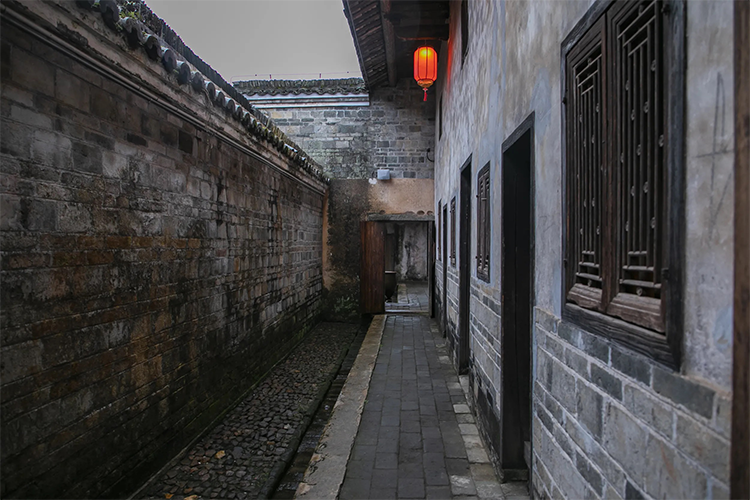Explore Guanxi Hakka Fortress and Hakka cuisine in Longnan’s Walled Village
Introduction
When you step into the Guanxi New Enclosure in Longnan, Jiangxi, time seems to freeze in the thick rammed-earth walls. This square stronghold of gray tiles and blue bricks is both a practical defense built by Hakka people and a physical expression of their idea of home. Four towering corner watchtowers look toward distant hills; 124 rooms align symmetrically along the ancestral hall axis. Every carving and ancient well tells of the Hakka survival philosophy of living together by clan. This is not a cold fortress but a living museum—kitchen smoke still rises, children laugh in the courtyards, and beneath a World Cultural Heritage halo you can feel the most vivid Hakka daily life.
1. Soul Architecture: Defensive and Aesthetic Codes of Guanxi New Enclosure
‘A walled village is a small kingdom for one clan’—this saying finds its fullest expression at Guanxi New Enclosure. Covering about 12,000 square meters, the square enclosure began construction in 1798 and took 29 years to complete, often described as the ultimate form of the Hakka square walled village.
– Survival engineered like a fortress
The rammed-earth outer walls, one meter thick, resist fire and artillery; the four corner watchtowers create an all-round defensive network. Narrow windows on the second-story walls serve as firing ports and ventilation. Yet beneath the wartime design are practical domestic solutions: concealed sewage channels, a well reaching 15 meters deep, granaries able to store three years of grain, and inner courtyards for livestock—Hakka self-sufficiency is literally built into the structure.
– Clan totems carved in beams and lintels
Push open the heavy studded wooden gates and a different world opens. With the ancestral hall at its center, the nine-entry, eighteen-hall layout follows classical rites; 124 rooms are distributed by generation. Look up to see wooden carvings of deer and cranes symbolizing prosperity and longevity; plaques over doorways proclaim ‘Pass down scholarship and ritual’, reflecting the clan value of learning. Don’t miss the ancestral hall’s coffered ceiling: hundreds of interlocking mortise-and-tenon joints form a dome without a single iron nail, standing intact after two centuries of weather.
2. Walled-Village Cluster: Decoding the Hakka Migration Epic
The Guanxi site is more than Guanxi New Enclosure alone. Surrounding villages—Xichang Enclosure, Penggao Enclosure, and other Ming and Qing-era compounds—form a scattered puzzle that together holds the Hakka cultural genome.
– Migration history written in stone
Comparing styles among the enclosures reveals the migration route from Fujian and Guangdong into southern Jiangxi. Penggao retains more Fujian tulou elements while Guanxi New Enclosure blends the Gannan ‘nine wells, eighteen halls’ layout with stronger Central Plains Han decorative motifs. This hybrid architecture is proof of how the Hakka rooted themselves in new lands.
– Intangible heritage alive and well
On lunar festivals, the enclosures host lei cha (pounded tea) workshops and Gannan tea-picking opera performances. If you visit a wedding, you may witness a bride’s lament—an ancient Central Plains rite preserved here where the bride sings to express gratitude to her parents. These living traditions offer direct insight into Hakka cultural continuity.

3. Deep Experience: Be a Hakka for a Day
– Must-see moments
– Watchtower at sunrise: Climb the northeast corner tower at dawn to see sunlight gild the walls, with rice paddies and kitchen smoke composing an ink-wash landscape.
– Night at the ancestral hall: On the first and fifteenth of the lunar month, oil lamps light the ancestral hall while elders tell migration stories in Hakka dialect.
– Signature activities
– Rammed-earth wall restoration experience: Under an artisan’s guidance, mix glutinous rice paste, yellow clay, and bamboo fiber to repair a small wall section and feel ancient construction techniques.
– Hakka banquet: Gather around an eight-immortal table to taste stuffed tofu, preserved mustard greens with pork, and glutinous rice snacks—before the first bite nostalgia already blooms.
4. Practical Guide: How to Unlock This Living Fossil
– Getting there
– By car: About 1.5 hours drive from Ganzhou Huangjin Airport, with scenic Gannan hills along the route.
– By public transport: From Ganzhou Railway Station take an intercity bus to Longnan City (about 1 hour), then a local bus to Guanxi town (30 minutes); the final stop is the site.
– Visitor tips
– Best season: Spring and autumn (March–May, September–November). Avoid the rainy season when walls are slippery; Chinese New Year offers special Hakka festivities.
– Guides and audio: English and Chinese audio guides available (¥100 deposit), or book a Hakka-descended guide at least one day in advance.
– Tickets: ¥80 per person (includes Guanxi New Enclosure and Xichang Enclosure); student discounts available. Daily visitor cap is 3,000—book online to secure your slot.
– Nearby connections
– One-day highlights: Guanxi enclosures in the morning → Longnan Hakka Wine Castle for lunch and a brewing experience → Yanyi Enclosure for golden-hour photography.
– Two-day deep route: Add Nan Yazhi Ancient Village for a Hakka homestay and hike Danxia formations at Small Wudang Mountain.

Conclusion
In an era of mechanized construction, every brick and stone of Guanxi New Enclosure reminds us that true architectural miracles are not technical showmanship but human creativity born from protecting home. Run your fingers along walls scarred by history and you may understand why the Hakka say ‘a long stay turns a foreign land into home’—this walled village is the most beautiful love letter migrants ever wrote to the land.


